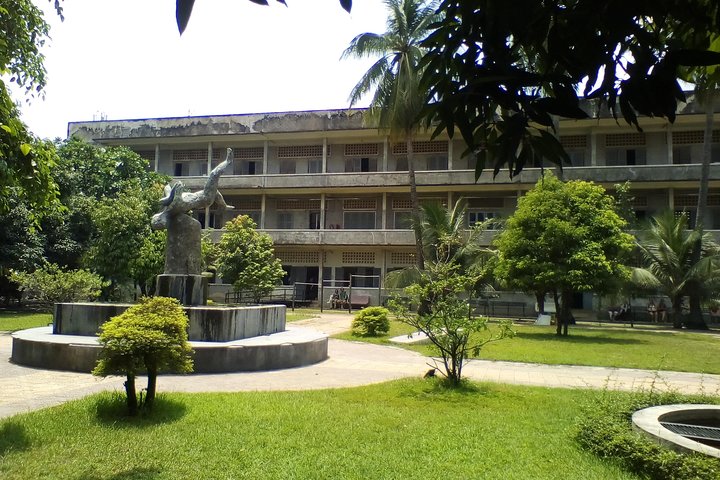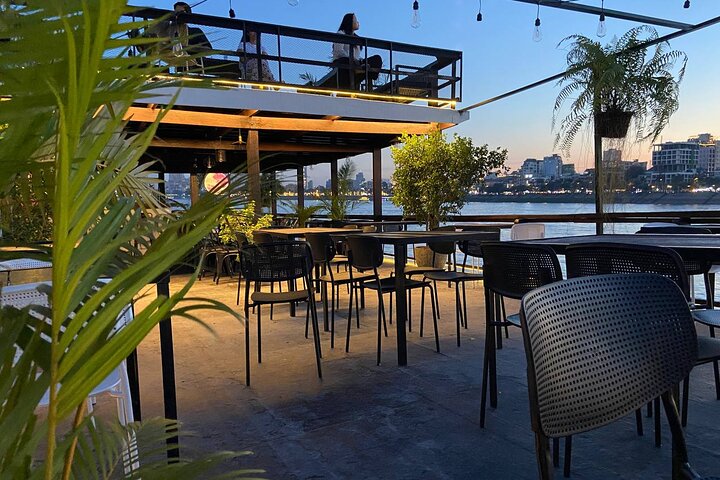
Phnom Penh, the vibrant capital of Cambodia, is a city that seamlessly blends rich history with modern charm. As you wander through its bustling streets, you’ll be captivated by the juxtaposition of ancient temples and French colonial architecture. One of the best ways to immerse yourself in the local culture is by embarking on a full-day tour that explores the city’s historic trading hub and cultural heritage. This tour will take you through the heart of Phnom Penh, offering a deep dive into its storied past and vibrant present.
For those who love to explore on foot, a private walking tour with a local guide is a must. This three-hour journey will lead you through the city’s hidden gems, from bustling markets to serene pagodas, providing a unique perspective on daily life in Phnom Penh. And if you’re a history enthusiast, don’t miss the full-day city tour that includes visits to the S21 Genocide Museum and the Killing Fields, offering a poignant look into Cambodia’s tragic past.
Phnom Penh is also a paradise for food lovers. Embark on an evening foodie Vespa tour to savor the city’s culinary delights, from street food stalls to hidden local eateries. This tour is perfect for those who want to experience the authentic flavors of Cambodian cuisine while zipping through the city’s lively streets on a Vespa.
For a more leisurely experience, consider a bike and boat sunset tour. This unique adventure allows you to uncover local gems and enjoy stunning river views as you pedal through the city and cruise along the Mekong River. It’s an ideal way to unwind and soak in the beauty of Phnom Penh’s natural surroundings.
No visit to Phnom Penh would be complete without exploring its vibrant markets. The morning market tour offers a foodie exploration with a tuktuk, where you can sample a variety of local delicacies and learn about the rich history behind each dish. This tour is a feast for the senses and a fantastic way to start your day in the city.
Whether you’re a history buff, a foodie, or an adventure seeker, Phnom Penh has something to offer everyone. Its unique blend of old and new, combined with its warm and welcoming locals, makes it a destination that should be on every traveler’s bucket list.
Phnom Penh, the vibrant capital of Cambodia, is a city that seamlessly blends rich history with modern charm. As you wander through its bustling streets, you’ll be captivated by the juxtaposition of ancient temples and French colonial architecture. One of the best ways to immerse yourself in the local culture is by embarking on a full-day tour that explores the city’s historic trading hub and cultural heritage. This tour will take you through the heart of Phnom Penh, offering a deep dive into its storied past and vibrant present.
For those who love to explore on foot, a private walking tour with a local guide is a must. This three-hour journey will lead you through the city’s hidden gems, from bustling markets to serene pagodas, providing a unique perspective on daily life in Phnom Penh. And if you’re a history enthusiast, don’t miss the full-day city tour that includes visits to the S21 Genocide Museum and the Killing Fields, offering a poignant look into Cambodia’s tragic past.
Phnom Penh is also a paradise for food lovers. Embark on an evening foodie Vespa tour to savor the city’s culinary delights, from street food stalls to hidden local eateries. This tour is perfect for those who want to experience the authentic flavors of Cambodian cuisine while zipping through the city’s lively streets on a Vespa.
For a more leisurely experience, consider a bike and boat sunset tour. This unique adventure allows you to uncover local gems and enjoy stunning river views as you pedal through the city and cruise along the Mekong River. It’s an ideal way to unwind and soak in the beauty of Phnom Penh’s natural surroundings.
No visit to Phnom Penh would be complete without exploring its vibrant markets. The morning market tour offers a foodie exploration with a tuktuk, where you can sample a variety of local delicacies and learn about the rich history behind each dish. This tour is a feast for the senses and a fantastic way to start your day in the city.
Whether you’re a history buff, a foodie, or an adventure seeker, Phnom Penh has something to offer everyone. Its unique blend of old and new, combined with its warm and welcoming locals, makes it a destination that should be on every traveler’s bucket list.































































































